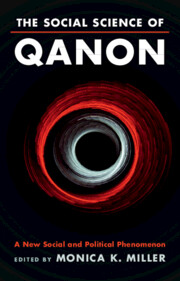Book contents
- The Social Science of QAnon
- The Social Science of QAnon
- Copyright page
- Dedication
- Contents
- Contributors
- Preface
- Part I Introduction to QAnon
- Part II Recruiting and Maintaining Followers
- Chapter 2 Down the Conspiracy Theory Rabbit Hole
- Chapter 3 Psychological Motives of QAnon Followers
- Chapter 4 Cognitive Processes, Biases, and Traits That Fuel QAnon
- Chapter 5 The Role of Moral Cognitions in the Growth of QAnon
- Chapter 6 Emotions and the QAnon Conspiracy Theory
- Chapter 7 Recruitment to QAnon
- Part III QAnon and Society
- Part IV The Role of Communication in Promoting and Limiting QAnon Support
- Part V The Future of QAnon
- Index
- References
Chapter 6 - Emotions and the QAnon Conspiracy Theory
from Part II - Recruiting and Maintaining Followers
Published online by Cambridge University Press: 14 September 2023
- The Social Science of QAnon
- The Social Science of QAnon
- Copyright page
- Dedication
- Contents
- Contributors
- Preface
- Part I Introduction to QAnon
- Part II Recruiting and Maintaining Followers
- Chapter 2 Down the Conspiracy Theory Rabbit Hole
- Chapter 3 Psychological Motives of QAnon Followers
- Chapter 4 Cognitive Processes, Biases, and Traits That Fuel QAnon
- Chapter 5 The Role of Moral Cognitions in the Growth of QAnon
- Chapter 6 Emotions and the QAnon Conspiracy Theory
- Chapter 7 Recruitment to QAnon
- Part III QAnon and Society
- Part IV The Role of Communication in Promoting and Limiting QAnon Support
- Part V The Future of QAnon
- Index
- References
Summary
Emotions have profound consequences for human functioning. Their influences can be adaptive, guiding people through life and ensuring effective functionality within society, but emotions can also result in irrationality and bias. This chapter focuses on the role of emotion in conspiratorial beliefs, using the QAnon conspiracy theory as an example. Within the chapter, we discuss affective factors that make QAnon appealing to its followers and the role of discrete emotions in the spread of misinformation and conspiratorial beliefs. The chapter also examines the influence of emotions on information processing. Given QAnon supporters’ strong emotional involvement in the movement, we discuss affective influences on information processing through the lens of affective polarization. In addition, we explain how emotions, particularly anger, influence the propensity towards extreme and sometimes violent action that has been on the rise among the followers of QAnon. The chapter concludes with a discussion of potential mitigating variables and strategies that might curb proliferation of QAnon.
Keywords
- Type
- Chapter
- Information
- The Social Science of QAnonA New Social and Political Phenomenon, pp. 87 - 103Publisher: Cambridge University PressPrint publication year: 2023
References
- 3
- Cited by

